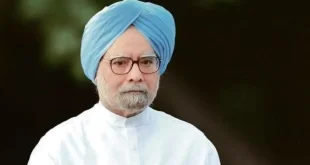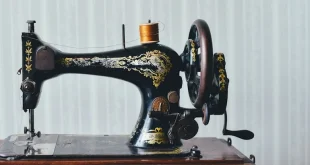Statutory scrutiny of the Annual Report on the functioning of the Government and Administration. Various statutory committees like Local Bodies Committee, Public Accounts Committee, Estimates Committee, Committee on Public Institutions, Committee on Welfare of Scheduled Castes/Tribes and Backward Classes, Privileges Committee, Committee on Government Trusts and Committee, Committee on Panchayati Raj Institutions, Committee on Table and Library Papers, House Committee, Committee on Reference of Questions, Press Gallery Committee, Committee on Cooperation and Allied Activities, Committee on Agriculture and Allied Activities etc. have also been provided to look into various issues.
If we talk about the Punjab Legislative Assembly, the current 16th Legislative Assembly of Punjab was constituted in March 2022 under this constitutional arrangement. Currently there are 117 members in this assembly. As interesting as the law of Punjab is, it is equally interesting to know its background.
During British rule, an Executive Council was constituted under the Indian Councils Act, 1861. Later, a 175-member Punjab Legislative Assembly was constituted under the Government of India Act, 1935. Its first meeting was convened on 1 April 1937 by the then Lieutenant Governor. In 1947, the Punjab province was divided into West Punjab and East Punjab. Due to the division of Punjab in 1947, East Punjab had 79 members.
In April 1952, the Punjab Legislative Assembly was constituted into two houses, namely Punjab Legislative Assembly and Punjab Legislative Council. On 15 July 1948, 8 princely states of Punjab came together to form PEPSU (East Punjab States Union). In the year 1956, PEPSU was merged into Punjab.
As a result of this merger, the number of seats in the Punjab Legislative Council increased from 40 to 46, which was further increased to 51 in 1957. The seats in the Punjab Legislative Assembly were increased from 126 to 186. On 6 November 1956, all the members took oath again in the Legislative Assembly.
In 1966, Punjab was divided into three states of Punjab, Haryana and Himachal Pradesh, which resulted in the Punjab Legislative Council (Upper House) having 40 seats. The seats of the Punjab State's lower house- the Punjab Legislative Assembly were increased from 50 to 104.
On January 1, 1970, the Punjab Legislative Council was abolished and a unicameral Legislative Assembly with 117 seats was formed in Punjab. Talking about the background of the Punjab Legislative Assembly, it has to be mentioned that during the period from 1897 to 1920, the system of Lieutenant Governor's Council continued for the then Punjab.
From 1921 to 1936, the Punjab Legislative Council functioned and from 1937 to 1947, the Punjab Legislative Council was replaced by the Punjab Provincial Assembly, which first convened on 5 April 1937.
The term of the Assembly was also extended during World War II, while in 1947 the Punjab Assembly was dissolved due to the resignation of the then Chief Minister Malik Khizr Hayat Tiwana in protest against the partition of Punjab.
It is notable that due to the partition of Punjab in 1947, an interim provincial assembly was formed for East Punjab (India) or present-day Punjab, which first met on 1 November 1947 and this assembly was dissolved on 20 June 1951. The Chief Ministers of Punjab during this period were Gopichand Bhargava and Bhim Sen Sachar. Kapur Singh was the Speaker of the first Punjab Provincial Assembly of India.
Due to the administration of elections to Lok Sabha and Legislative Assemblies under the Constitution, the first elections to the Punjab Assembly were held in 1952 and the first 126 seats of the Punjab Assembly came into existence. Its first meeting was held on 3 May 1952 and it lasted till 31 May 1957. During this time the Chief Ministers of Punjab were Bhim Sen Sachar and
Pratap Singh lived in Cairo.
The second assembly completed its full term from 24 April 1957 to 1 March 1962. The Chief Minister of Punjab during this period was Pratap Singh Kairon. The third assembly's term was from 13 March 1962 to 28 February 1967 while the Punjab Assembly was suspended from 5 July 1966 to 1 November 1966. During this period, Pratap Singh Kairon, Gopichand Bhargava, Ram Kishan and Gurmukh Singh Musafir were the Chief Ministers.
The fourth assembly lasted from 20 March 1967 to 23 August 1968 and the Punjab Assembly was dissolved prematurely. Similarly, the 5th Assembly (13 March 1969 to 14 June 1971) was also dissolved prematurely. Due to the Emergency in India, the term of the sixth assembly of Punjab was extended by one month.
The Seventh Legislative Assembly was dissolved prematurely. The Eighth Legislative Assembly (23 June 1980 to 26 June 1985) was suspended from 6 October 1983 and later dissolved. The Ninth Legislative Assembly (14 October 1985 to 11 May 1987) was also dissolved prematurely.
It is noteworthy that under Article 356 of the Indian Constitution, Punjab Assembly was dissolved 8 times from 30 June 1951 to 11 May 1987 and President's rule was imposed. Similarly, in Jammu-Kashmir and Bihar states 8 times, in Kerala state 6 times, in Manipur 10 times, in Uttar Pradesh 9 times and similarly in other states too, the Assemblies were dissolved before their term. Due to the mischief of the central governments from time to time, President's rule has been imposed 134 times so far.
After the formation of the Punjabi state, the Congress governments at the centre broke many Akali governments elected in Punjab on one pretext or the other. Giani Zail Singh was the first Congress government to complete five years.
Let us tell you that the 10th to 15th assembly in Punjab have completed their tenure and now the 16th assembly is going on which has completed almost half of its term. The government is running with a huge majority in Punjab. Still political conflict is common here. This is the reason why the sessions of the assembly remain chaotic. God bless
 look news india
look news india


